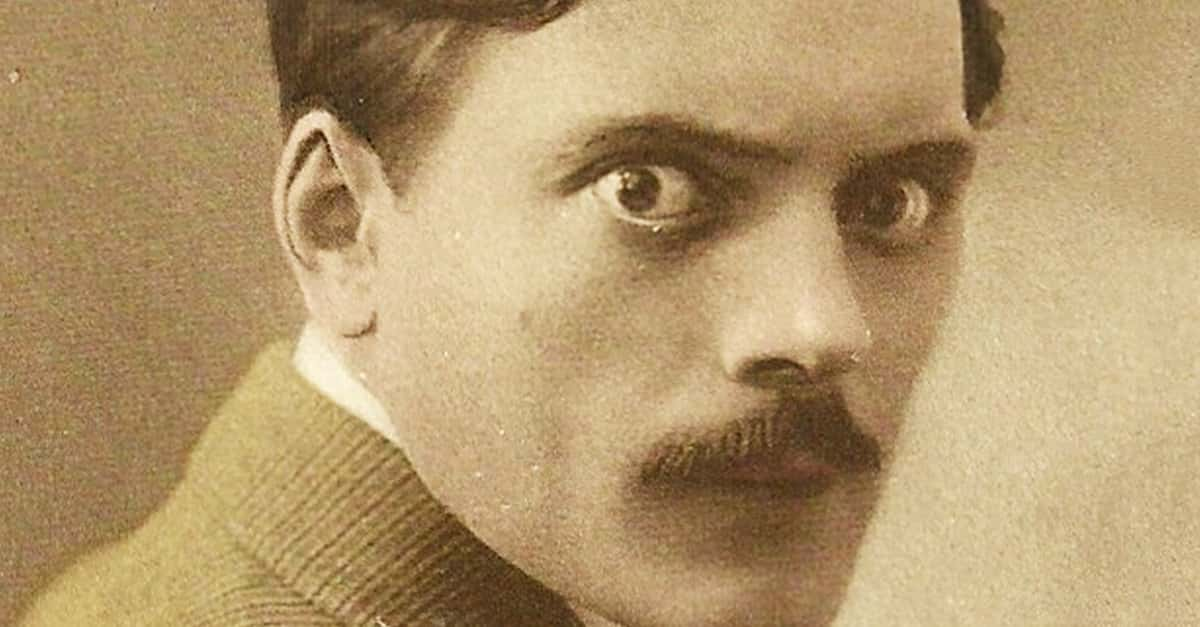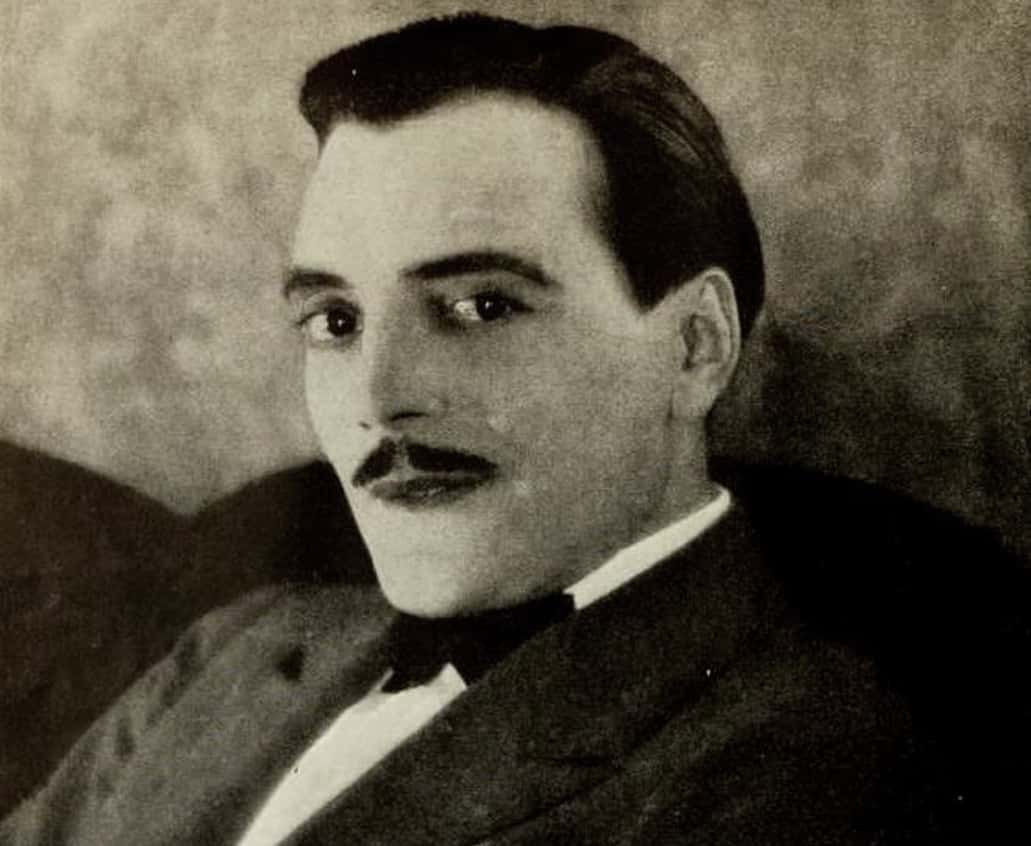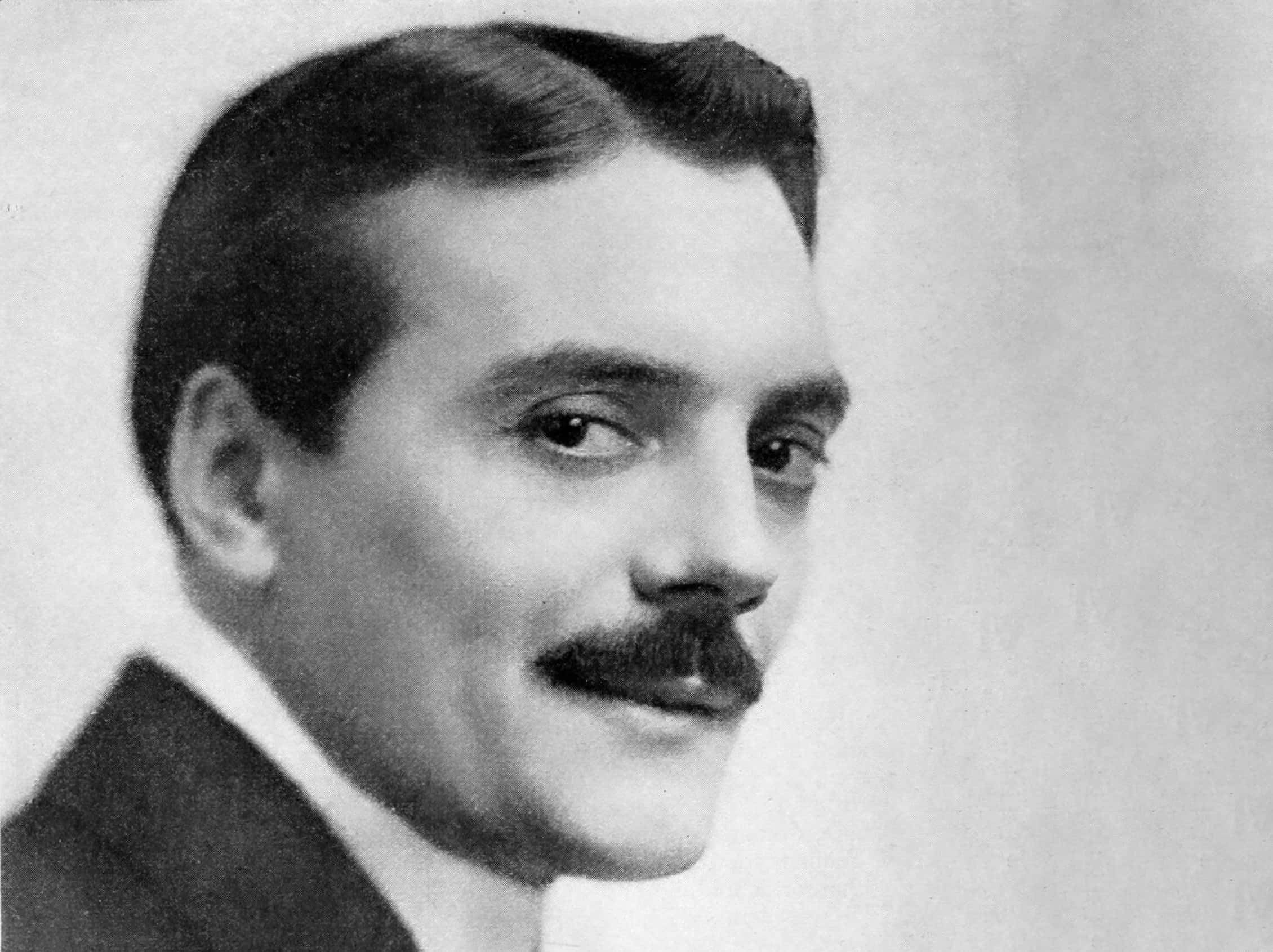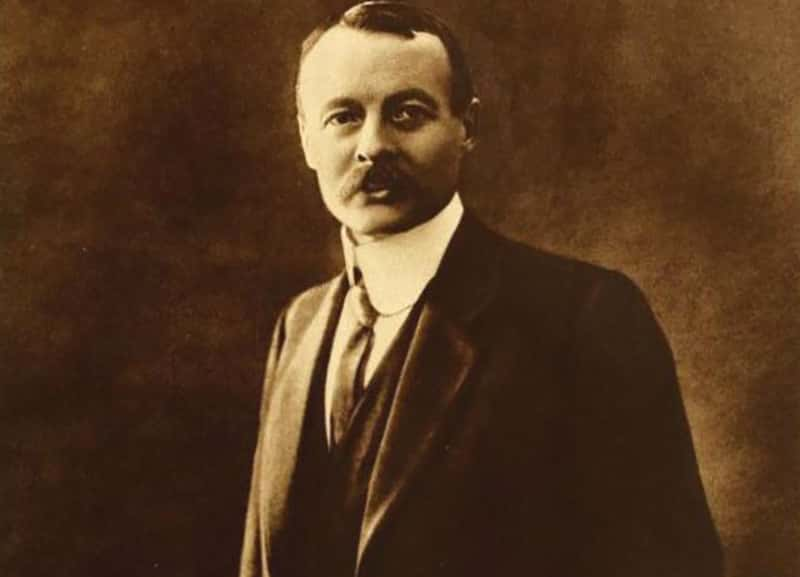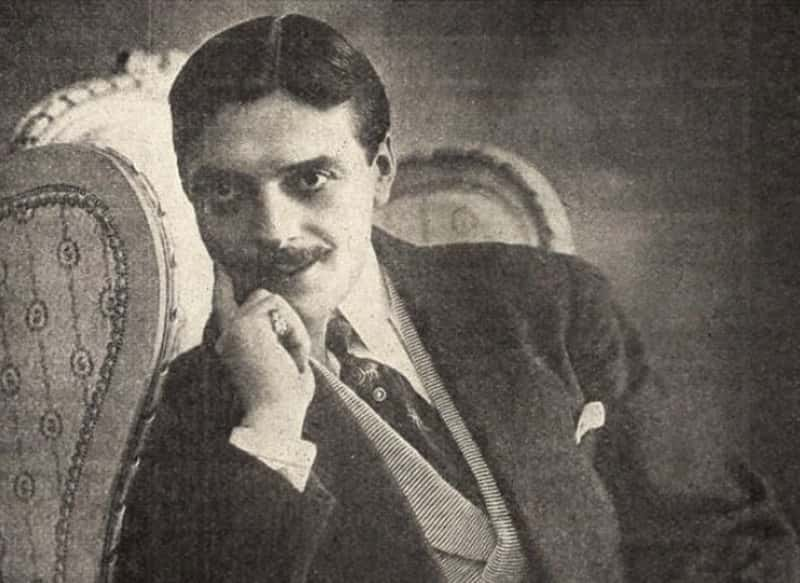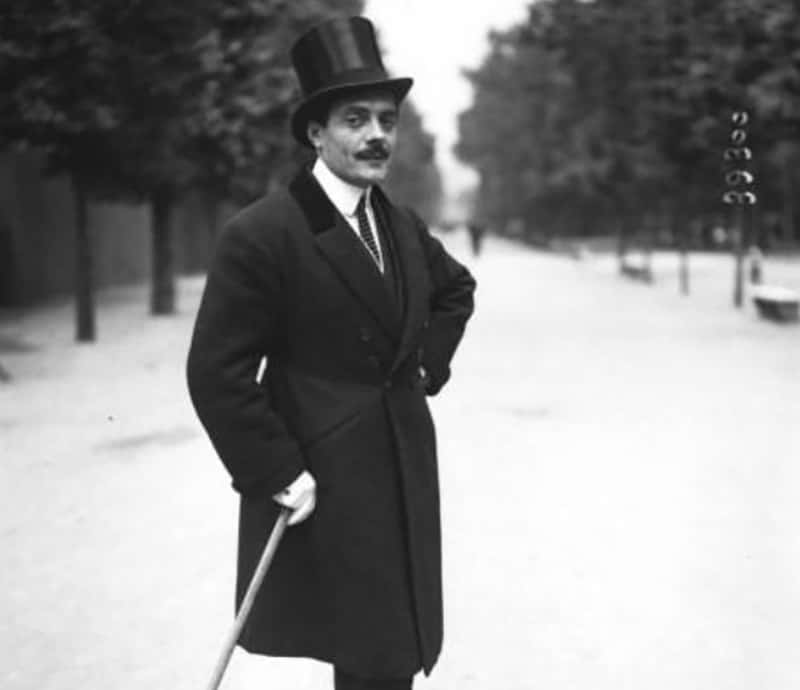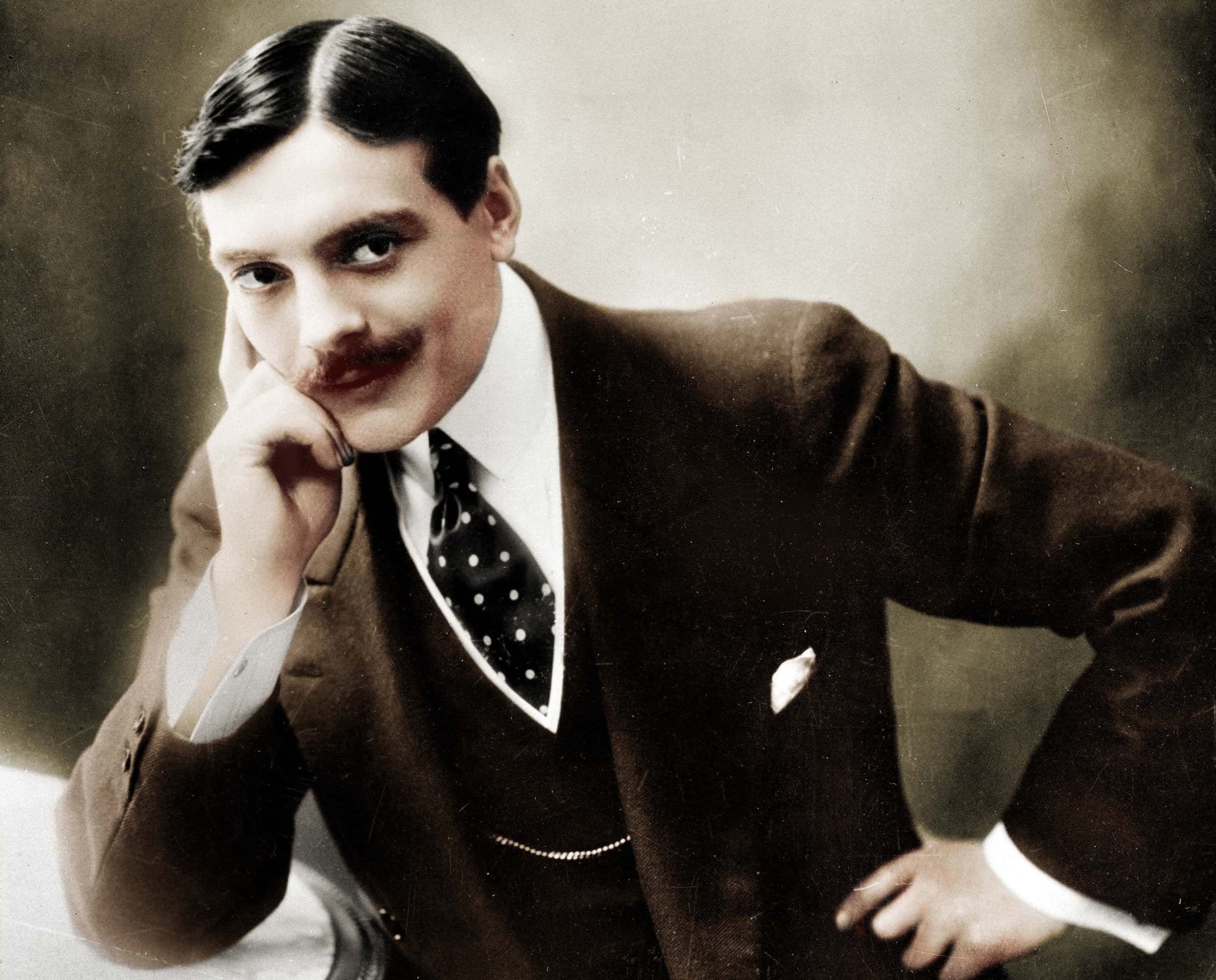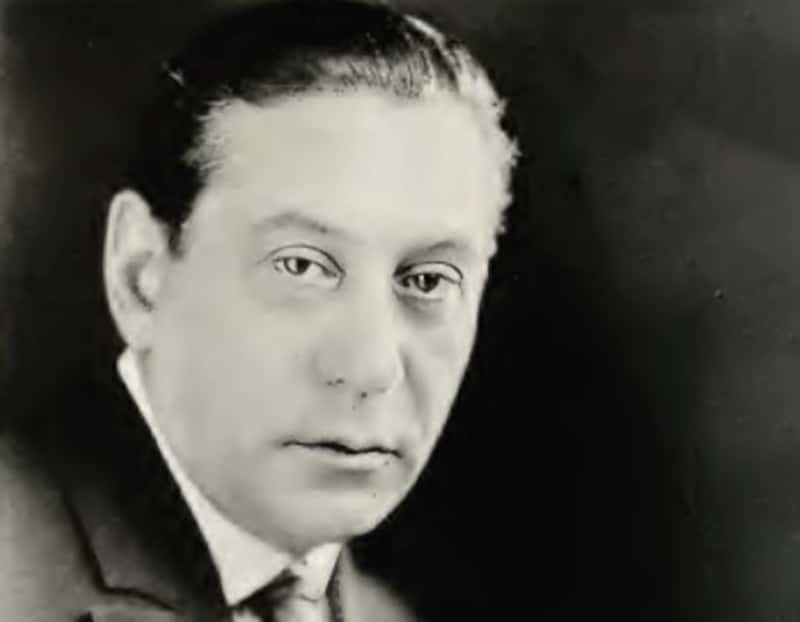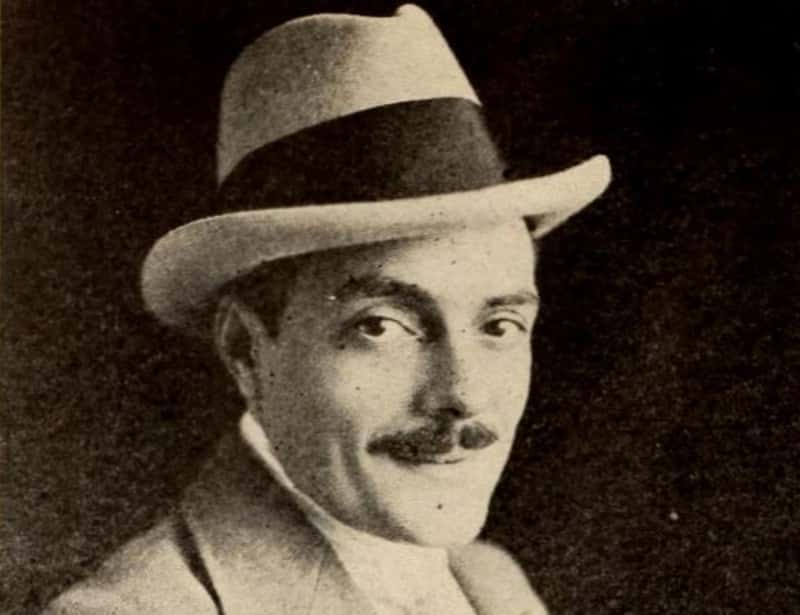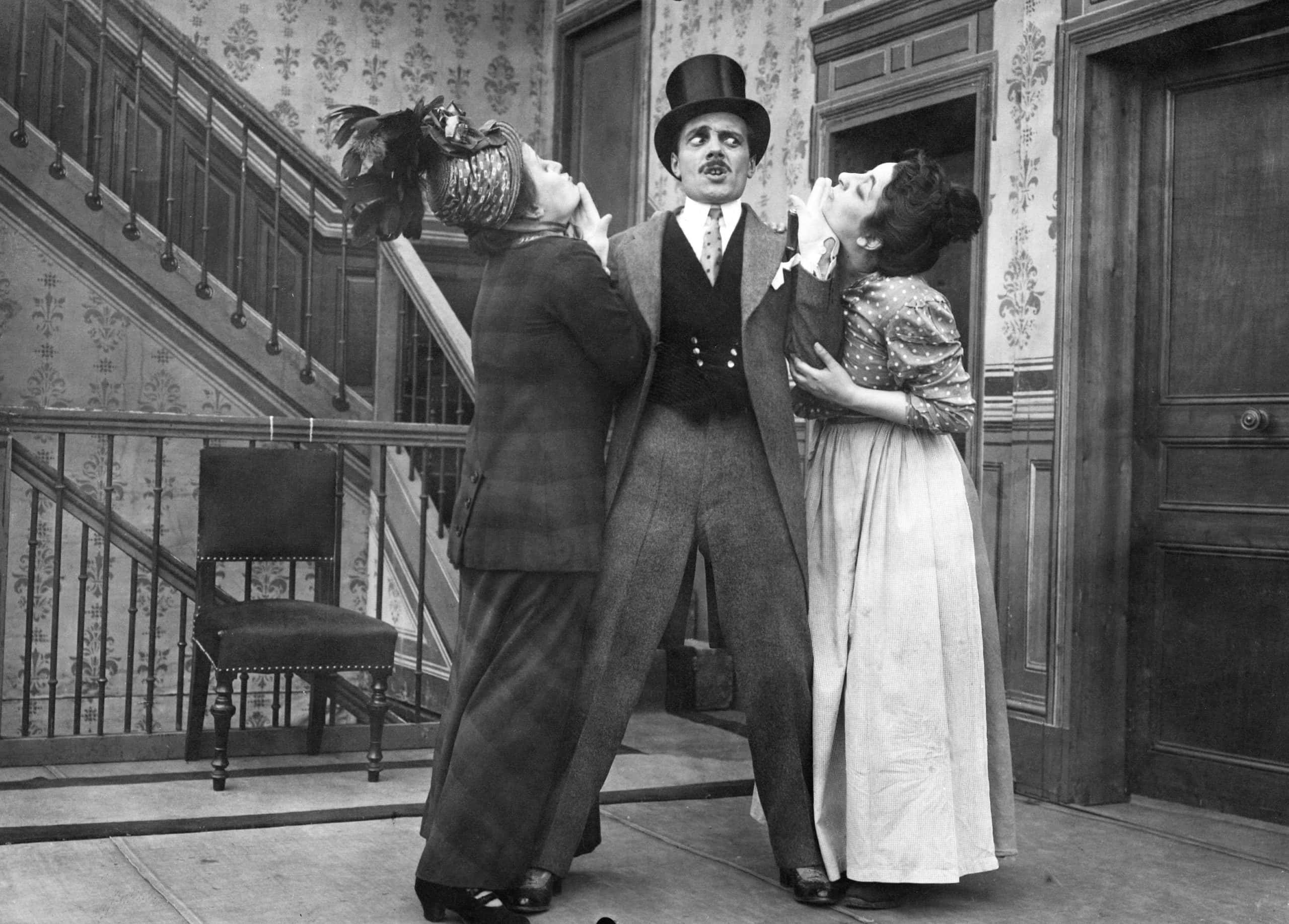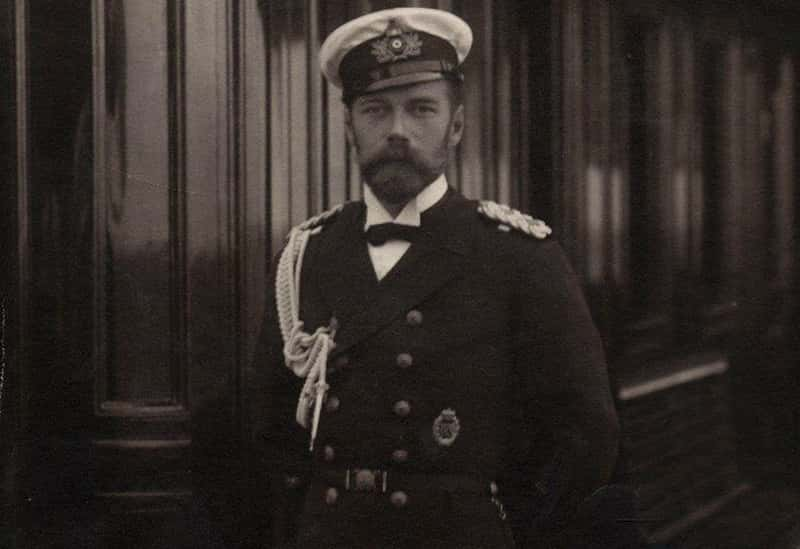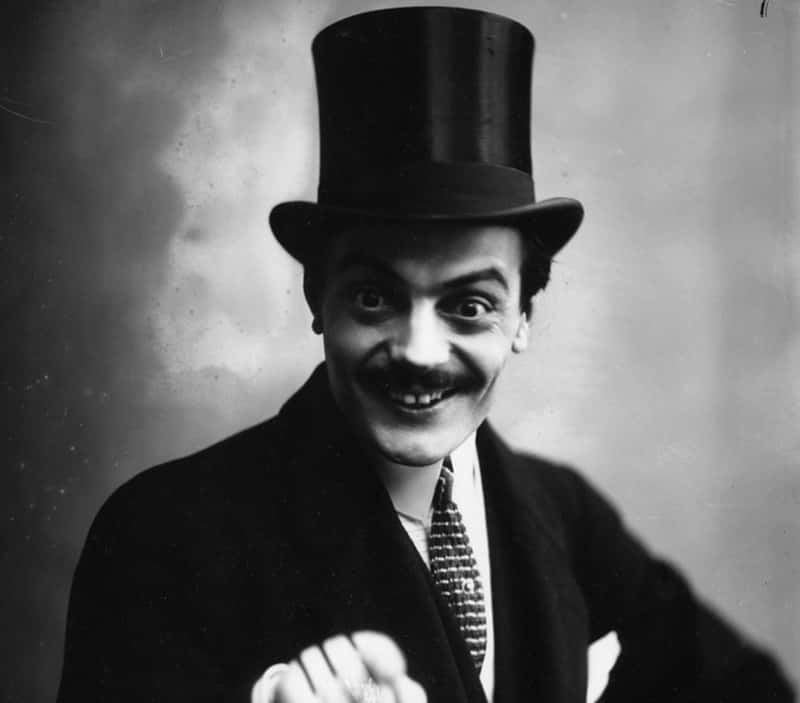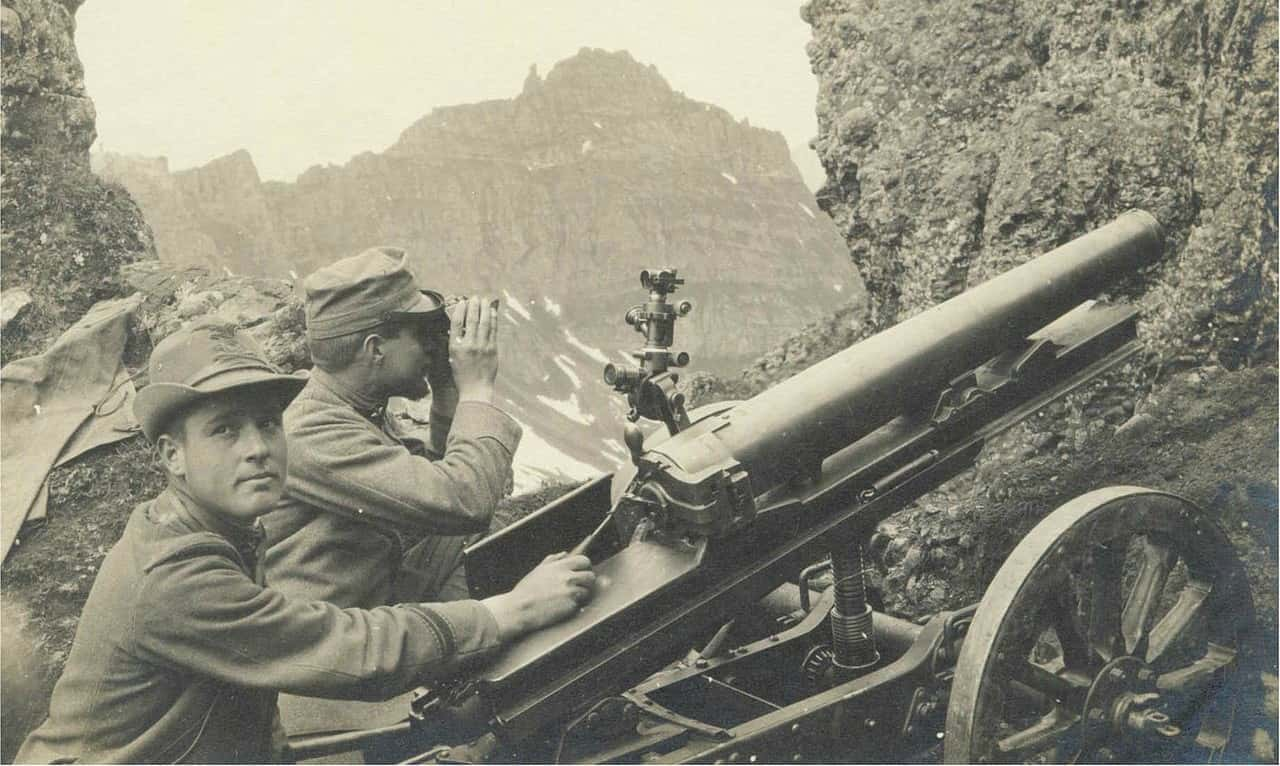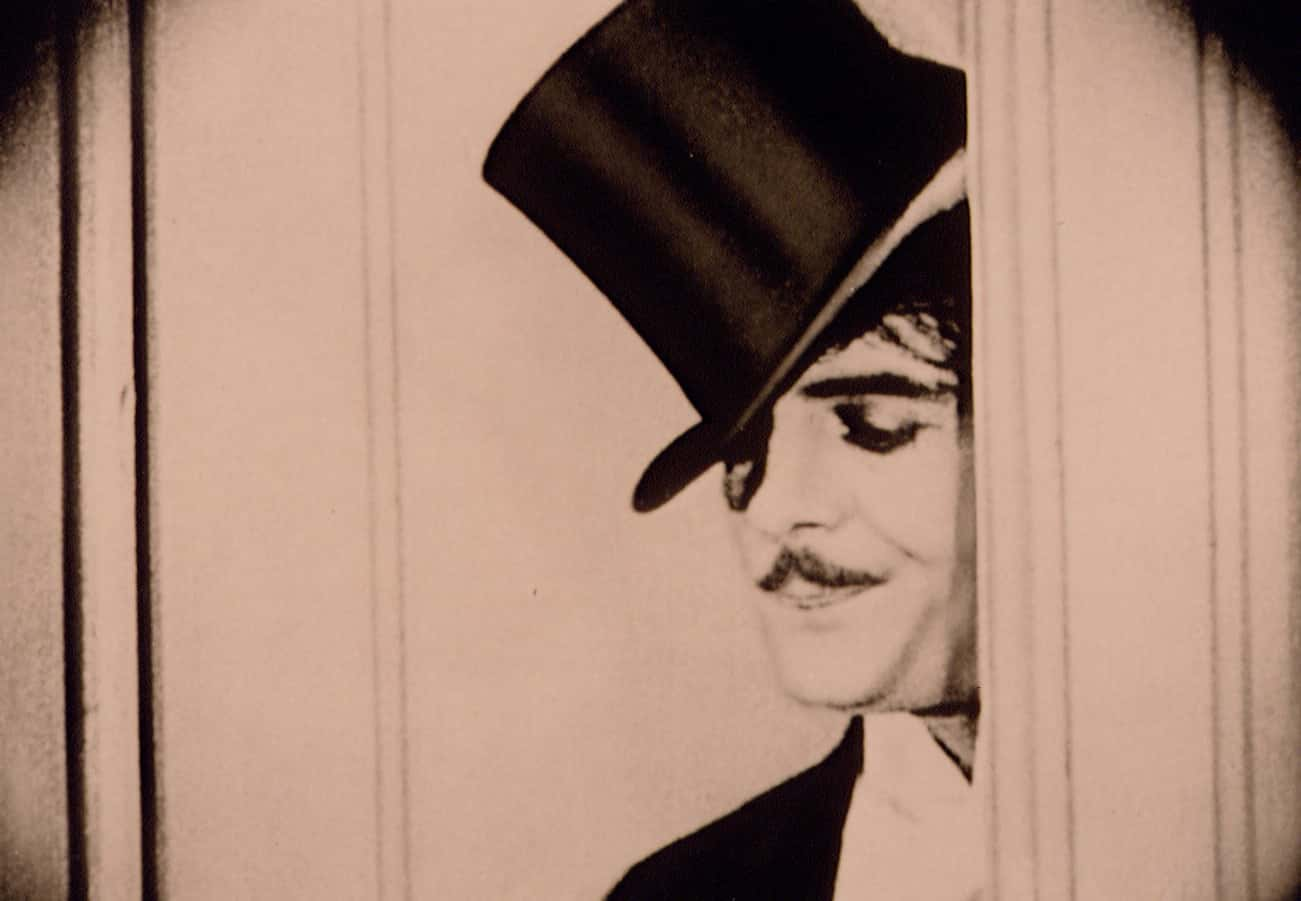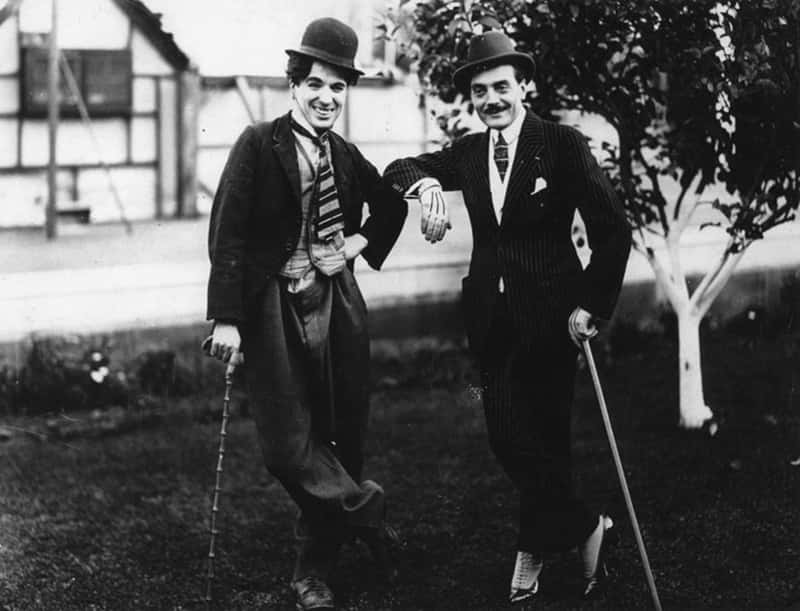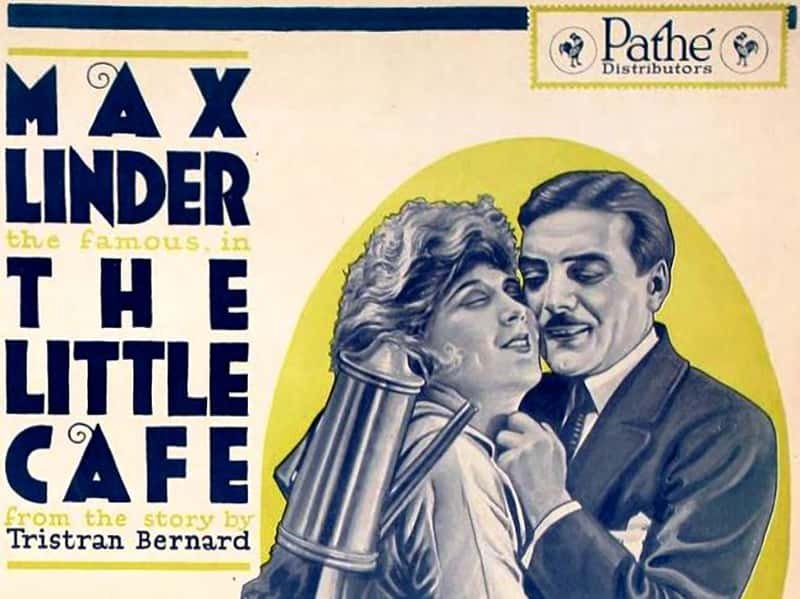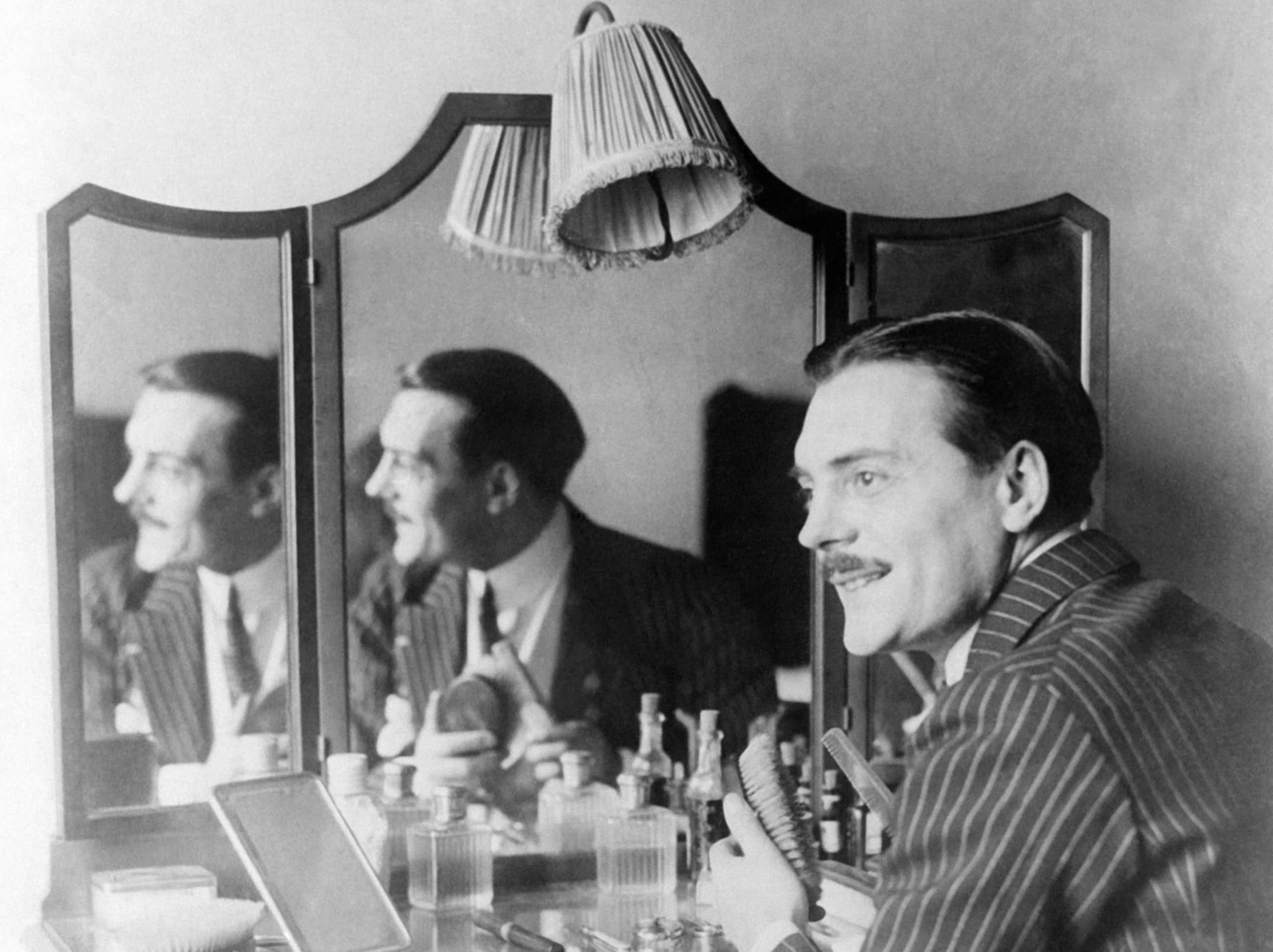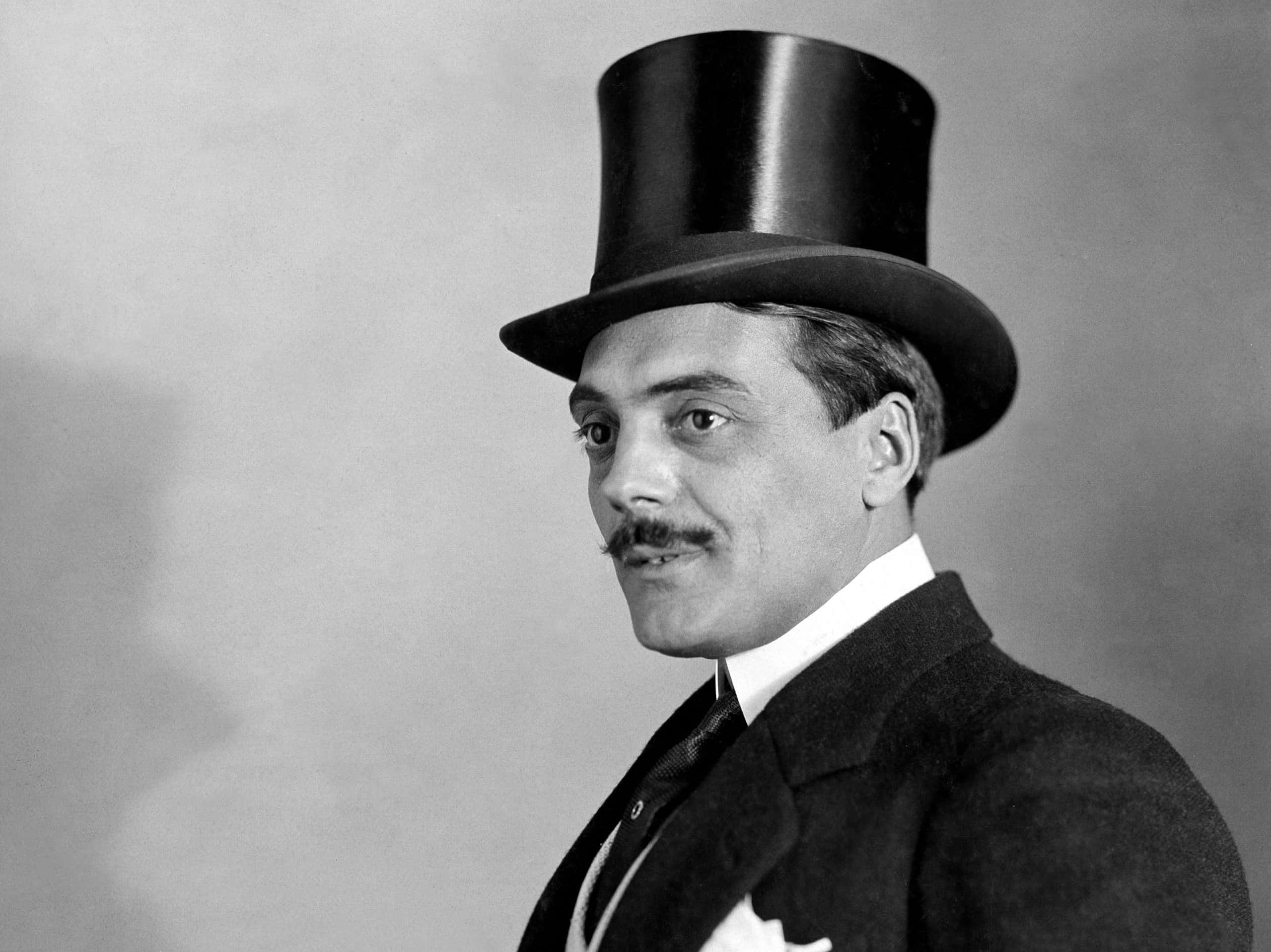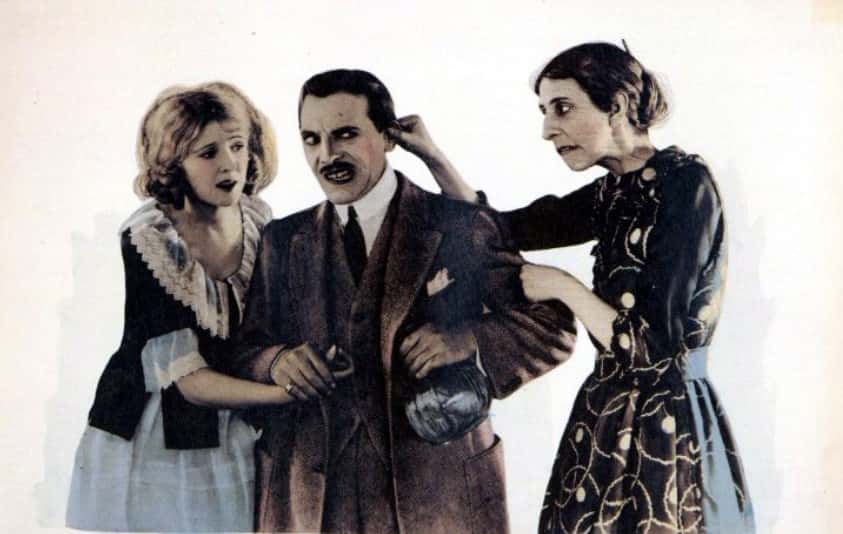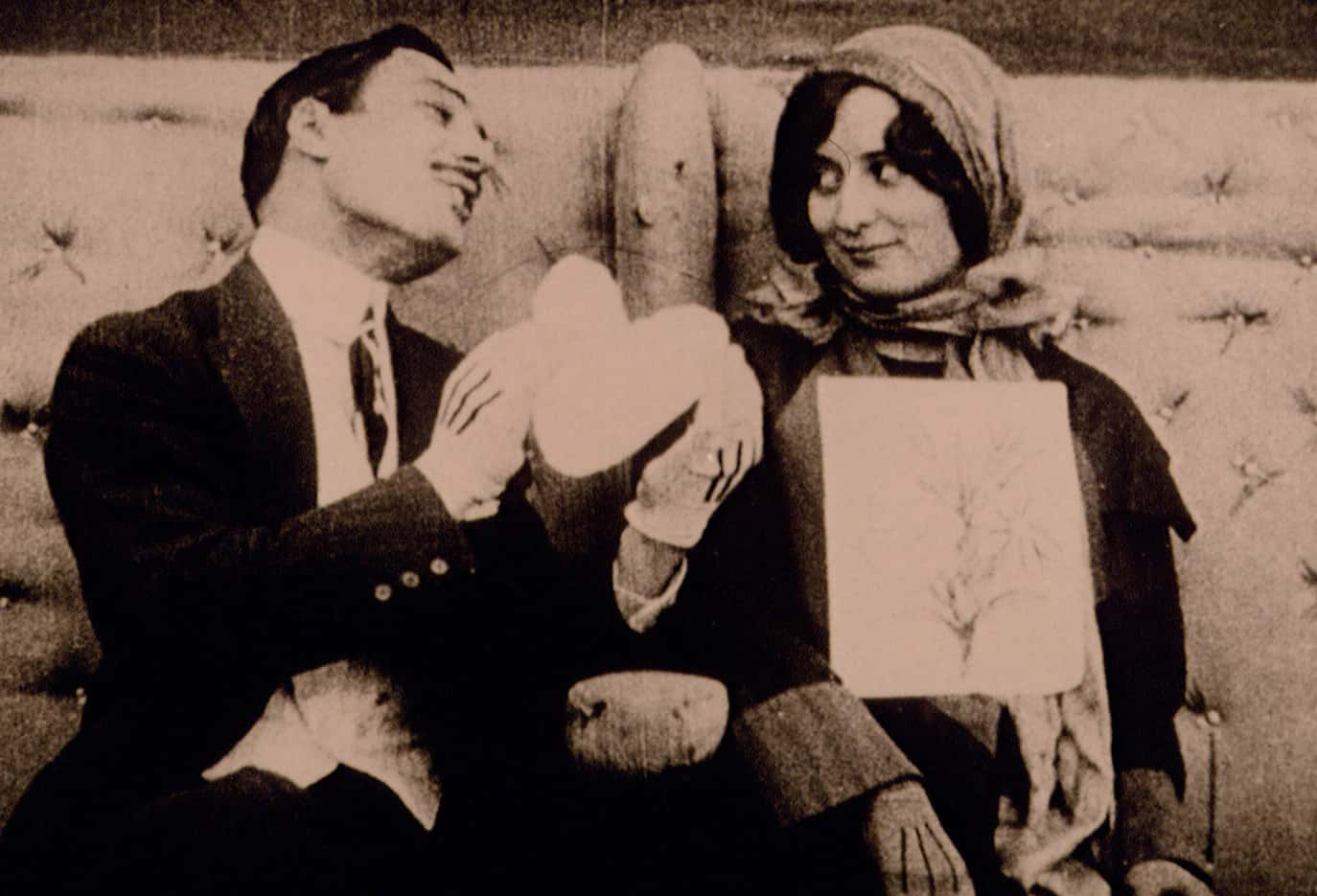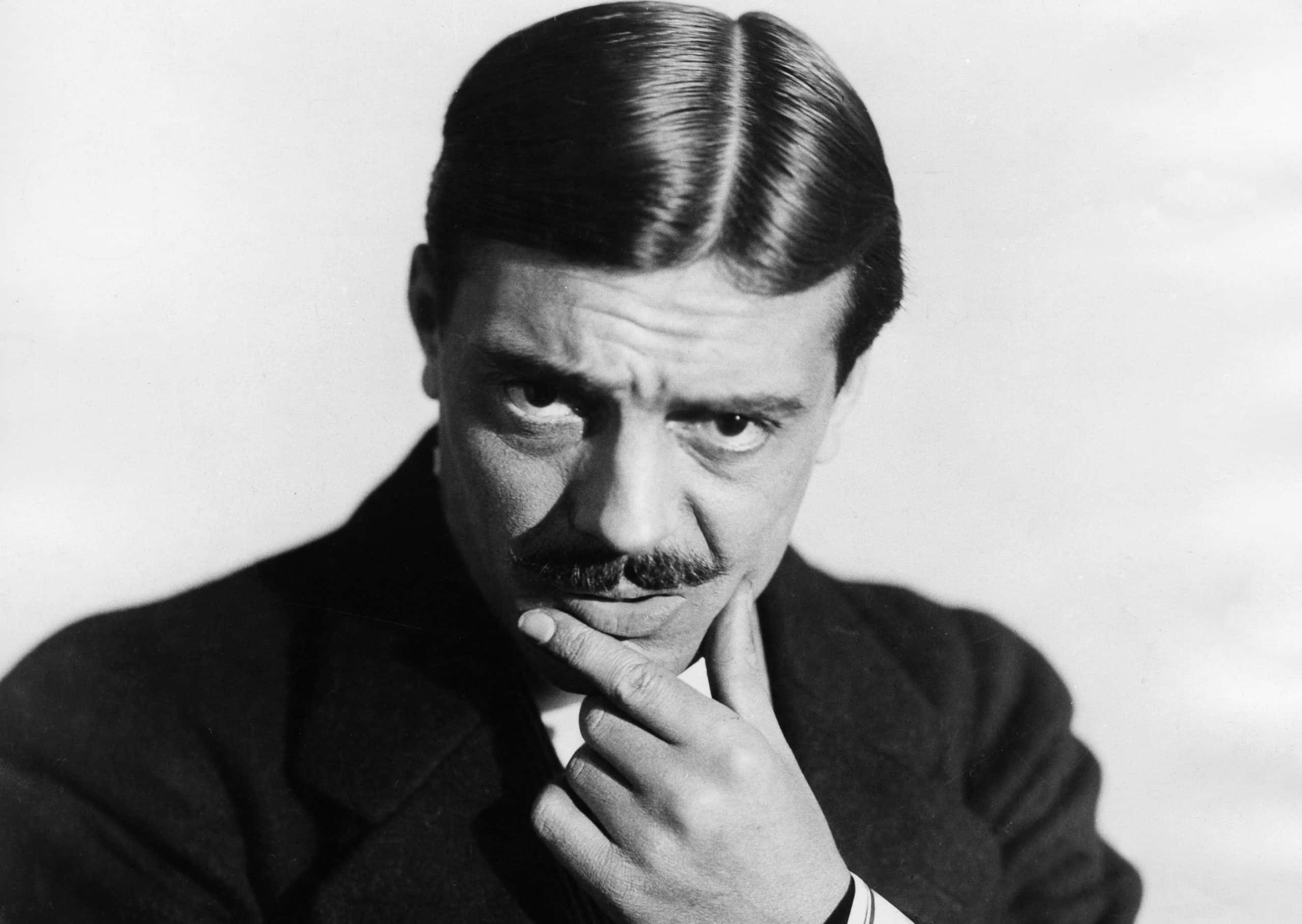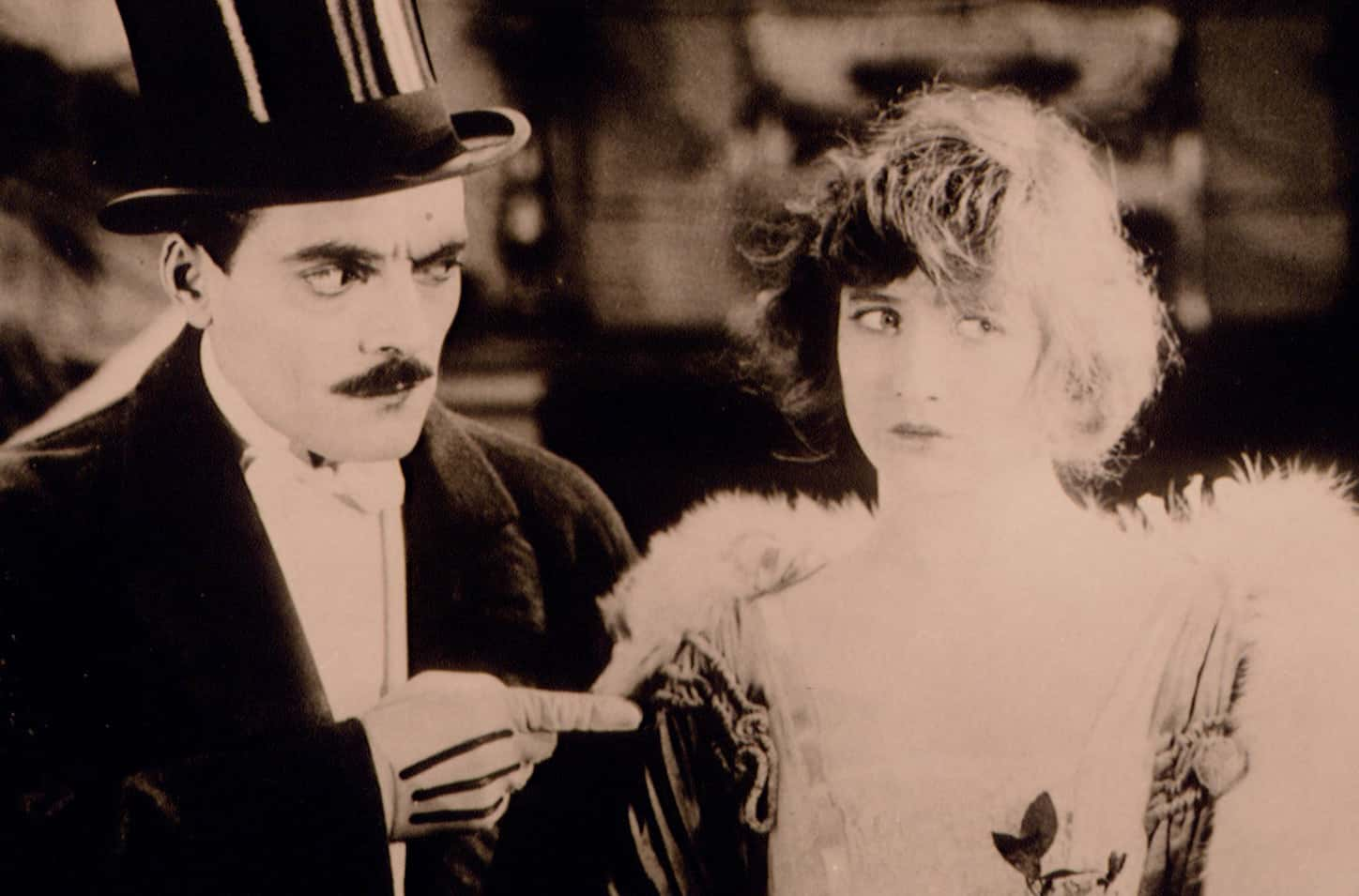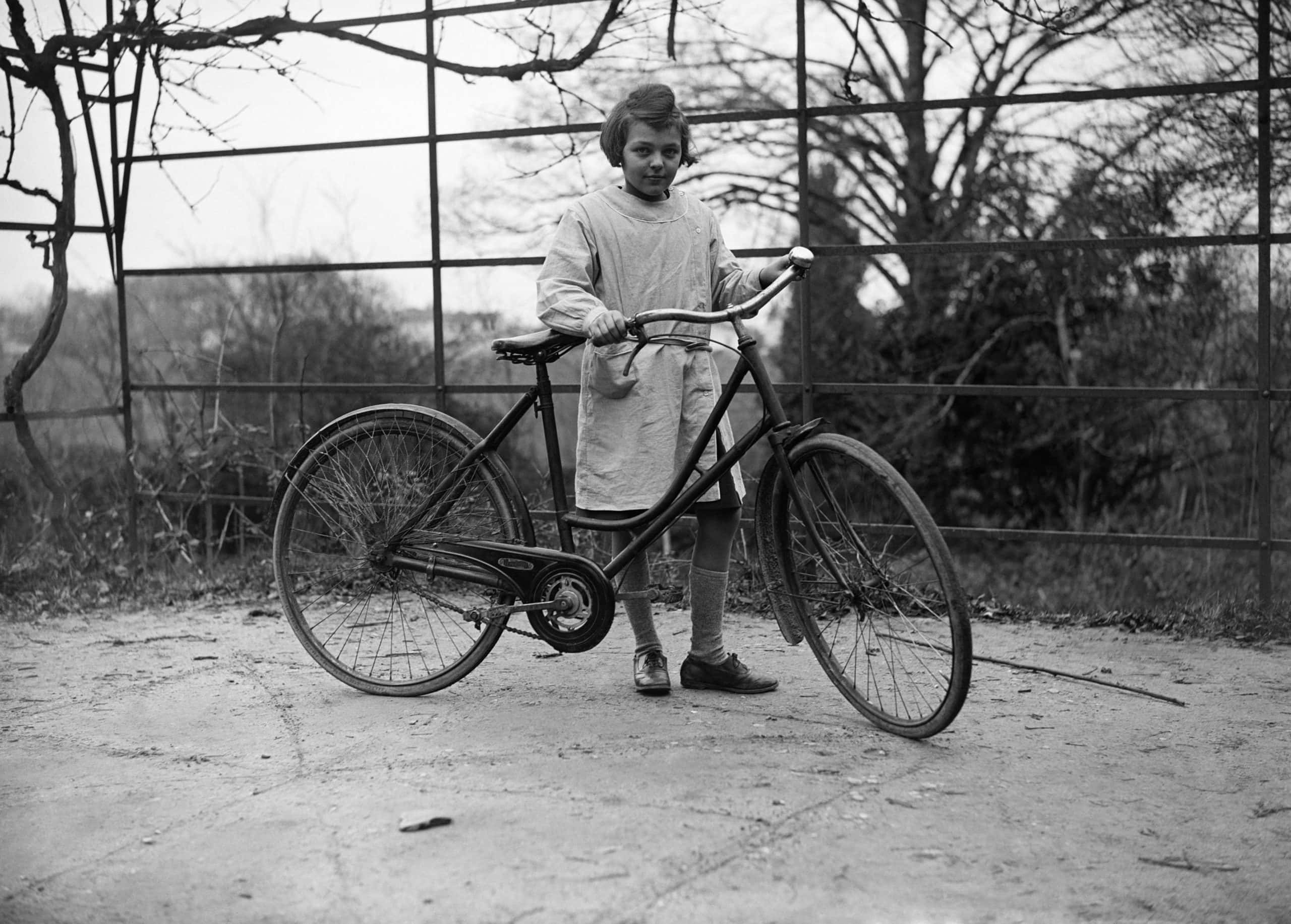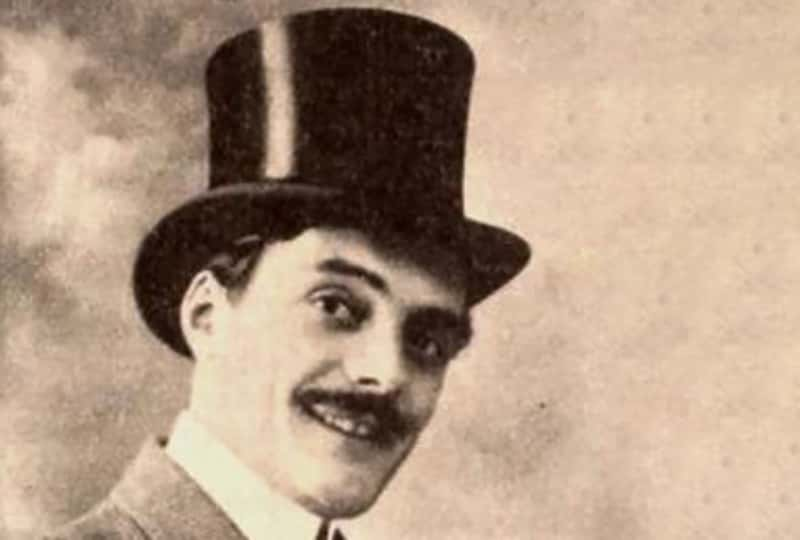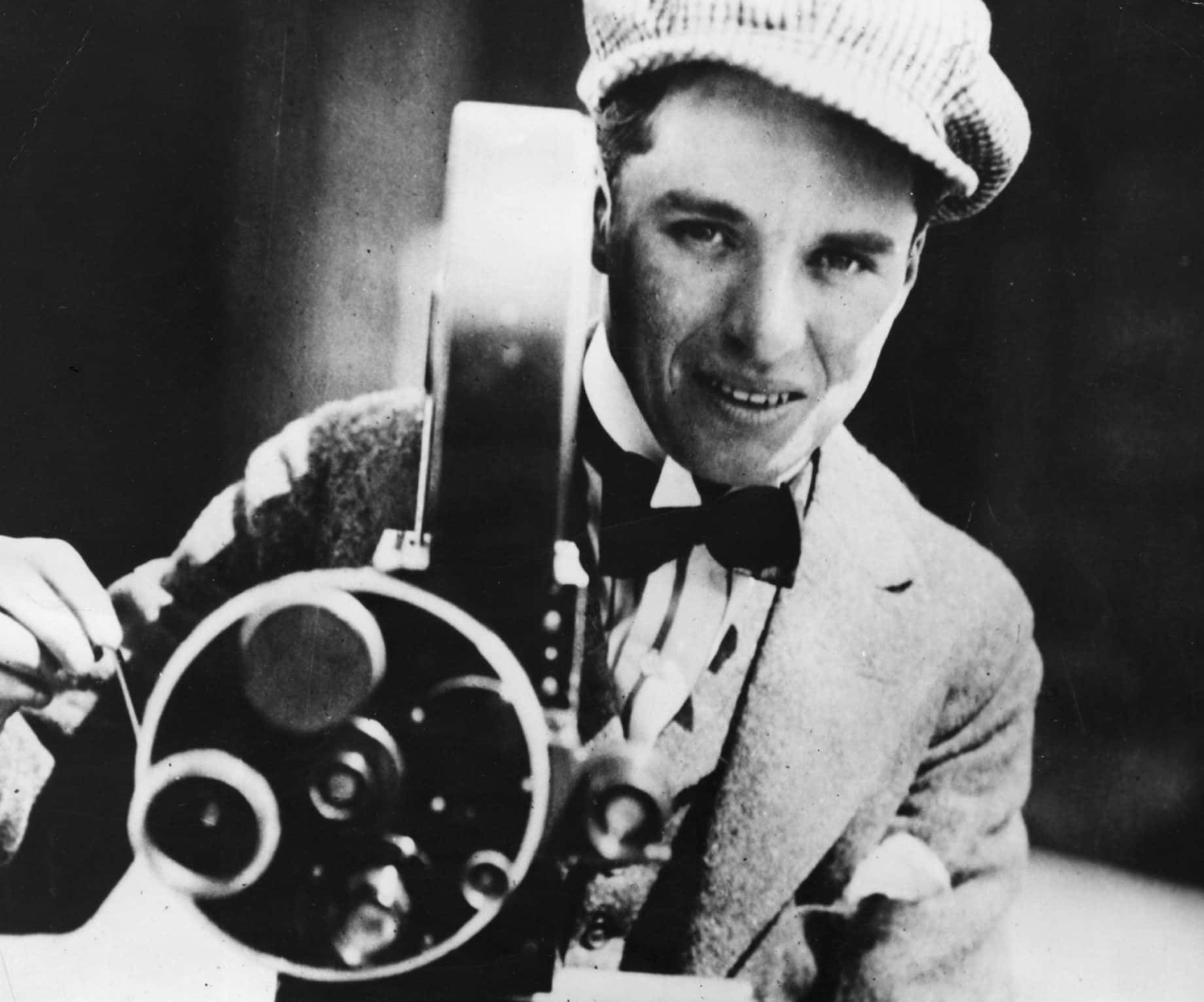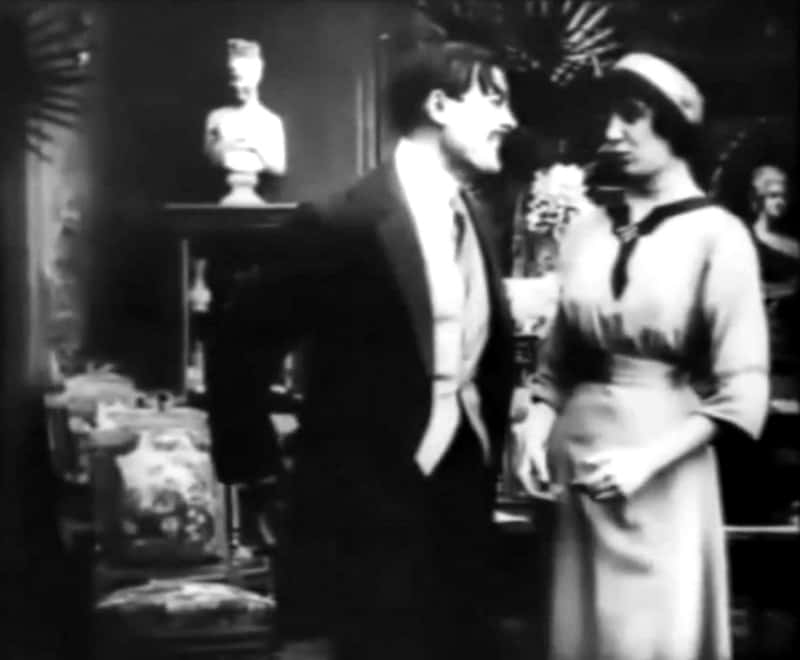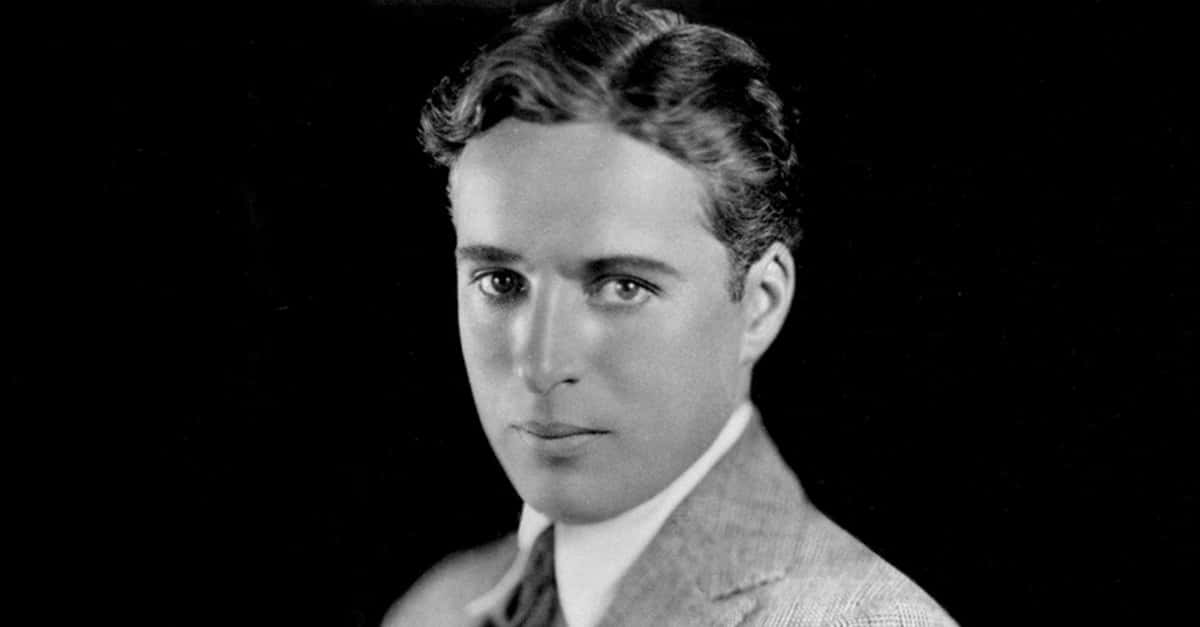When it comes to comedic silent films, many people today think about films that star the likes of Charlie Chaplin or Buster Keaton. However, very few know about the man that inspired their acts: Max Linder. Although Linder was one of the most famous stars in his day and has left his fingerprints on just about every movie we see today, his story is relatively unknown.
Why is that? And what led to his sudden and gruesome end? Read on to find out.
1. He Had Big Dreams
Born on December 16, 1883, in France, Max Linder—known back then as Gabriel Leuvielle—was the son of two wealthy vineyard owners. His parents fully expected young Linder to inherit the family business, but Linder had no interest in living out the rest of his life amongst a bunch of grapes. No, Linder’s passion lay elsewhere, and it led him down a path that scandalized his parents.
2. He Was Passionate
What was Linder’s passion? It was acting—or more specifically, theater. Linder grew up fascinated with the traveling theater and circus performers that occasionally rolled through his town; watching them lit a fire in him that drove him like nothing else. His parents, of course, weren’t too pleased by these aspirations and tried everything they could to set Linder back on the “right” path.
3. He Defied His Parent
In an effort to control their rebellious and mischievous little boy, Linder’s mom sent him away to a boarding school near Bordeaux. This didn’t deter Linder in the slightest (in fact, Linder spent most of his time at boarding school cutting classes and walking along the docks). Linder wasn’t going to let anyone or anything stop him from becoming a star, and so, in 1899, Linder fully committed to becoming a bonafide actor.
4. He Blew Them Away
At the age of 16, a teenage Linder enrolled in the Conservatoire de Bordeaux. He quickly gained recognition from the school, which awarded him for his ability to perform in both comedies and tragedies. From there, Linder just kept pushing forward. By 1901, Linder was a contract player with the Bordeaux Theater of Arts, taking on roles in serious tragedies. Unfortunately, Linder’s life was about to take a seriously tragic turn…
5. He Didn’t Impress Everyone
In 1904, a friend encouraged Max Linder to audition for the Conservatoire de Paris, one of the finest conservatories in Europe. Getting accepted by such a prestigious institution could’ve pushed Linder’s career to new heights, and allowed him to rub elbows with some of the most famous industry leaders of his day. Unfortunately, the conservatory rejected his application, which dealt a stunning blow to his fledgling career.
6. He Never Gave Up
After being rejected by the Conservatoire de Paris two more times, Max Linder began taking on roles in less prestigious theaters, like the Olympia Theater and the Théâtre de l'Ambigu. Although the work was far from glamorous, Linder continued to throw himself into acting. By 1905, Linder finally found a silver lining: he managed to land himself a job at Pathé Frères, a pioneering company in the French film industry.
There, he met someone that changed the course of his life forever.
7. His Success Was Foretold
The man that changed Linder’s life was Charles Pathé (the founder of Pathé Frères), and the legend of how Linder caught his attention is an incredible one. After seeing Linder act on stage, Charles Pathé allegedly left Linder a note that read, “In your eyes lies a fortune. Come and act in front of my cameras, and I will help make it.”
Whether that’s true or not remains a mystery, but one thing’s for sure: Charles Pathé fulfilled his promise to Linder, and then some.
8. He Got His Chance At Fame
Between 1905 and 1907, Linder began acting in small, comedic roles while working under Charles Pathé. Even though the roles were small, Linder’s style of silent, situational comedy was already beginning to take shape. After two years of acting in dozens of supporting roles, Linder finally got his chance at stardom when Pathé Frères’s main slapstick star left to join another company. It was time for Linder to show the world what he was made of.
9. He Created An Icon
Pathé Frères needed Linder to create a recognizable on-screen persona, and it’s safe to say that Linder knocked that request out of the park. Linder named this persona “Max,” who film critic David Robinson described as “young, handsome, debonair, immaculate…in silk hat, jock coat, cravat, spats, patent shoes, and swagger cane.”
His character’s attire and penchant for mischief were perfect for comedy on the silent screen—but not everyone thought so.

History's most fascinating stories and darkest secrets, delivered to your inbox daily.
10. He Had His Debut
In 1907, with the support of a director named Louis Gasnier, Linder filmed his first picture as “Max” at Lake Daumesnil in Paris. This simple film, called The Skater’s Debut, featured Linder wreaking havoc on the lake as he attempted to master the art of skating. The film later went on to inspire Charlie Chaplin, who used it as the basis for The Rink nine years later.
However, when it came to Linder's obvious brilliance, some needed more convincing than others.
 Max Learns to Skate (1907), Pathé Frères
Max Learns to Skate (1907), Pathé Frères
11. He Failed Spectacularly
Unfortunately for Linder, Pathé Frères was largely unimpressed by The Skater’s Debut, and even re-shot parts of the film. To make matters worse, the audience reception of the film was lukewarm at best. This was probably disheartening enough for Linder, but unbelievably, things were about to get even worse for the budding comedian.
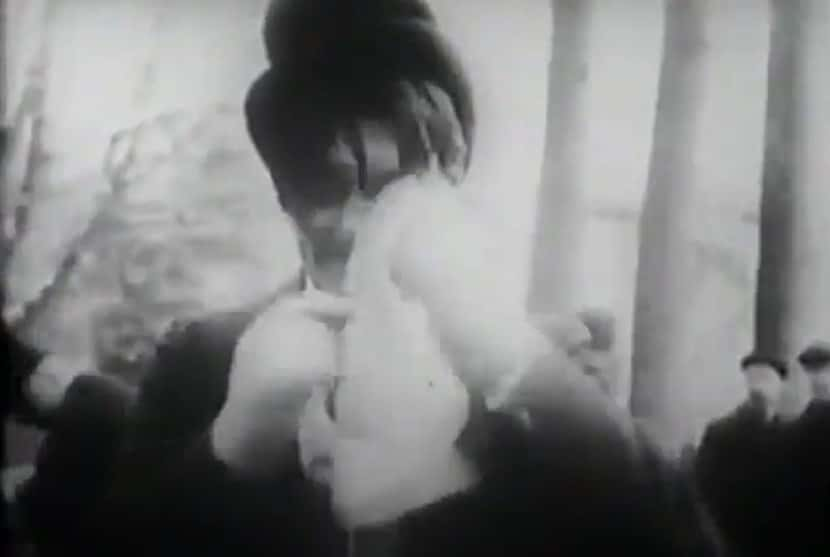 Max Learns to Skate (1907), Pathé Frères
Max Learns to Skate (1907), Pathé Frères
12. He Fought An Uphill Battle
Soon after the release of The Skater’s Debut, Gasnier—Linder’s biggest supporter at Pathé Frères—moved to Italy. As a result, Linder made very few films in 1908. This likely felt like a disastrous time for Linder: not only did the debut film for his new character fall flat on its face, but now, he was left to fend for himself at Pathé Frères.
After a year of quietly struggling, Linder’s luck began to turn.
13. He Had A Stroke Of Luck
Linder’s first stroke of luck came in the form of Pathé Frères's top comedy star leaving for another film company. This forced Pathé Frères to make Linder their leading comedic actor. Linder’s second stroke of luck came in the form of Gasnier’s return to Paris; upon his return, he immediately teamed up with Linder once again. They were back in business.
Throughout 1909, the duo filmed several shorts, and some were…Interesting, to say the least.
14. He Got Experimental
Upon their reunion, Linder and Gasnier began a short period of experimentation in their films. One of these experiments included changing Linder’s on-screen character; in one film, he acted as a blind and elderly man, and in another, he took on the role of a “coquettish young woman.” However, it was Linder’s original character, “Max,” that audiences really responded to.
The duo stuck with “Max” from then on, and that decision catapulted them straight to stardom.
15. He Found Success
From then on, the star of the show was "Max"—a young, rich, and handsome bachelor that constantly got into trouble due to his love for the ladies. His films and on-screen antics became increasingly popular, so much so that in 1910, Linder shot a comedy every single week to keep up with demand. By the end of 1910, Linder became the world’s first international movie star.
16. He Rocketed To Fame
It’s not an exaggeration to say that Linder’s rise to fame is nothing short of meteoric. Russia voted Linder their country’s most popular film actor, he had a Russian impersonator, and even Czar Nicholas II himself loved Linder. Bulgaria’s first-ever feature film was a remake of one of Linder’s films, and Berlin offered Linder $12,000 just to make public appearances.
Linder was a bonafide superstar—and he almost didn’t live to see it.
17. He Nearly Lost It All
Right at the peak of his newfound success, tragedy struck: A serious case of appendicitis forced Linder to stop making films. He was ill and bedridden for months; things got so bad that several newspapers actually reported that Linder had lost the battle with his illness. Fortunately, Linder soon recovered and was back at it by the following spring. But this time, Linder wasn’t just going to be an actor.
This time, Linder was going to have a go at the director’s chair.
18. He Returned With A Bang
When Linder became a director, he struck gold. Having complete creative control made Linder’s films even more popular with movie-goers; his silent films and comedic style were easy to understand by people all over the world, and it made him one of the highest-paid entertainers in the industry. In fact, his salary ended up changing the face of the entertainment industry entirely.
19. He Was Ridiculously Rich
Soon, Linder was happily rolling in the dough. Pathé Frères increased Linder’s salary by 150,000 francs; to put that in perspective, the average monthly salary in France was 100 francs. But wait, that’s not all. In 1912, Linder demanded a salary of one million francs a year—which Pathé Frères ended up paying. Linder’s insane pay raise set the standard for actors’ salaries in Hollywood that we still see today, and it gave him the unflattering nickname of “The Napoleon of the Cinema.”
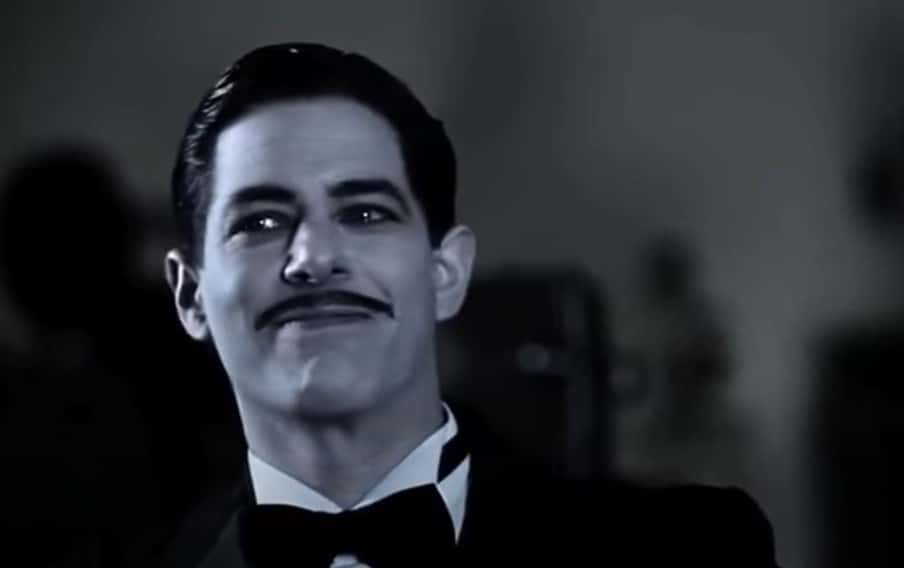 The Mystery of the King of Kinema (2014), Zanzibar Producciones Audiovisuales
The Mystery of the King of Kinema (2014), Zanzibar Producciones Audiovisuales
20. His Career Came To A Sudden Halt
So now, Max Linder was stunningly famous and fabulously wealthy. What could possibly go wrong? Well, the arrival of WWI in 1914 certainly threw a wrench into Linder’s career. With his filmmaking put on hold, Linder attempted to enlist and join the fighting, but recruiters deemed him physically unfit for combat. Instead, he became a dispatch driver, but he didn’t stay in that role for long.
21. WWI Horrified Him
After two years, Linder was officially dismissed from service. No one knows exactly why, but the rumors were positively horrifying. Several newspapers speculated that he had lost his life, and others stated that Linder caught pneumonia after hiding in icy water to evade German patrols. Some even believed that a poisonous gas attack left his body irreversibly damaged.
What we do know, however, is this: Fighting in WWI left Linder with a serious case of chronic depression, and sadly, this dogged him for the rest of his life.
 The Mystery of the King of Kinema (2014), Zanzibar Producciones Audiovisuales
The Mystery of the King of Kinema (2014), Zanzibar Producciones Audiovisuales
22. He Carried Permanent Scars
After coming face-to-face with the horrors of WWI, Linder began to suffer from frequent mental breakdowns. When Linder eventually went back to filming after his dismissal from service, those working under him had to endure his “tantrum-like appearances at the studio.” Despite his mental state, Linder continued pushing out films, and soon, he got a chance to test his filmmaking skills in America.
23. They Put Their Hopes On Him
In 1916, an American company called the Essanay Film Manufacturing Company approached Linder, asking him to make twelve short films in the US for a salary of $5000 per week. Essanay hoped that Linder could replace Charlie Chaplin, who'd recently left them for another company. With his skills and star power, Linder could easily outshine Chaplin—but things didn’t go quite that smoothly.
24. They Left Him High And Dry
Unfortunately for Linder, America didn’t receive him quite as warmly as Europe had. His first two American-made films, Max Comes Across and Max Wants a Divorce, completely and utterly failed on a critical and financial level. His third film, Max and his Taxi, did slightly better, but it wasn’t enough. And the final nail in the coffin? Essanay canceled the rest of his films entirely.
Despite this setback, Linder did have one silver lining to look forward to.
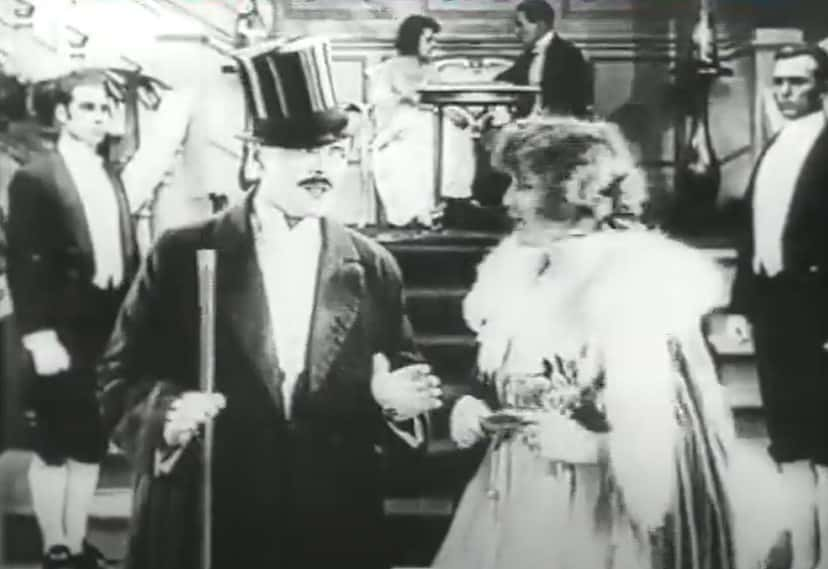 Max Wants a Divorce (1917), The Essanay Film Manufacturing Company
Max Wants a Divorce (1917), The Essanay Film Manufacturing Company
25. He Made An Unexpected Friend
In a truly ironic twist, Linder became close friends with Charlie Chaplin during the filming of Max and his Taxi. The two got along well on both a professional and personal level. The pair often attended boxing matches or car races together, or would discuss the art of filmmaking and comedy from evening to the break of dawn. Chaplin saw Linder as his comedy master, but that wasn’t enough to save Linder from his deteriorating mental state.
26. He Was A Haunted Soul
Unable to find success in America, Linder returned to France in 1917. While Linder managed to take some steps to further his career, his depression and anxiety over WWI prevented him from making films on a regular and predictable schedule. During this period, Linder often spoke at length about the horrors of WWI when talking to journalists; it was clear that Linder simply couldn't shake the nightmares of his past.
Just a year later, however, things for Linder took a sudden and dramatic turn.
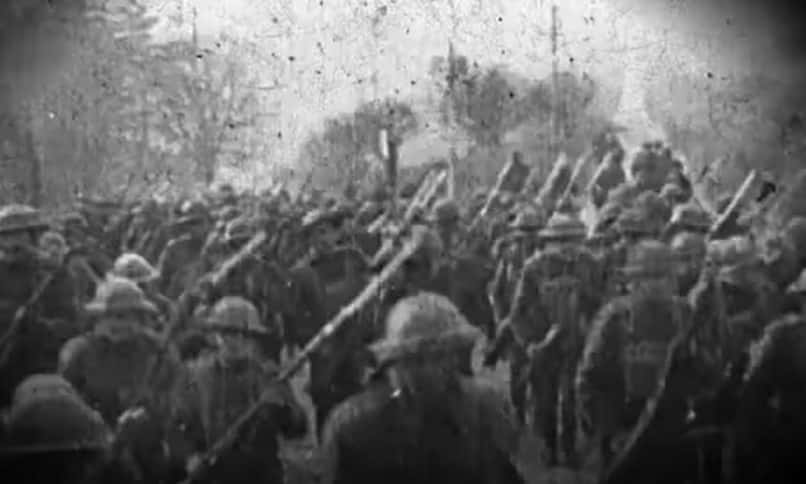 The Mystery of the King of Kinema (2014), Zanzibar Producciones Audiovisuales
The Mystery of the King of Kinema (2014), Zanzibar Producciones Audiovisuales
27. He Found His Passion Again
Many celebrated the Armistice of November 11, 1918, but few celebrated more than Linder himself. Elated at the news that WWI was over, Linder felt reinvigorated, and his passion for film ignited once again. The following year, he filmed The Little Café, which featured Linder as a waiter that suddenly becomes a millionaire. Ironically, the film made over a million francs in Europe, which, for one dazzling moment, brought his career back to life.
Outside of Europe, however, things for Linder were looking grim.
28. He Couldn't Cope With The Pressure
Despite his runaway success in Europe, America continued to be indifferent to Linder and his films. The Little Café failed financially in the U.S; it must’ve felt to Linder that nothing he did could please American audiences. The enormous task and pressure of becoming a global star must have weighed heavily on Linder’s mind, and it may explain why his life devolved into a series of unfortunate events.
29. He Turned To Drugs
Faced by the mounting pressures of fame and with his mental health in tatters, Linder began searching for relief. Relief, however, came in the form of opium, which may have caused Linder to spiral even further out of control. At the very least, he became even more obsessed with becoming successful in America, and this obsession may have driven him to make his next drastic move.
30. He Pushed Filmmaking To Its Limits
In 1921, Linder took another stab at making a name for himself in America. This time, he formed his own production company in Hollywood, where he filmed Seven Years Bad Luck. Linder pulled out all the stops for this film. One scene, for example, featured Linder and a double mimicking each other in a mirror move-for-move, an incredibly difficult feat to pull off without the use of CGI and modern camera techniques. Unfortunately, all this work was for naught.
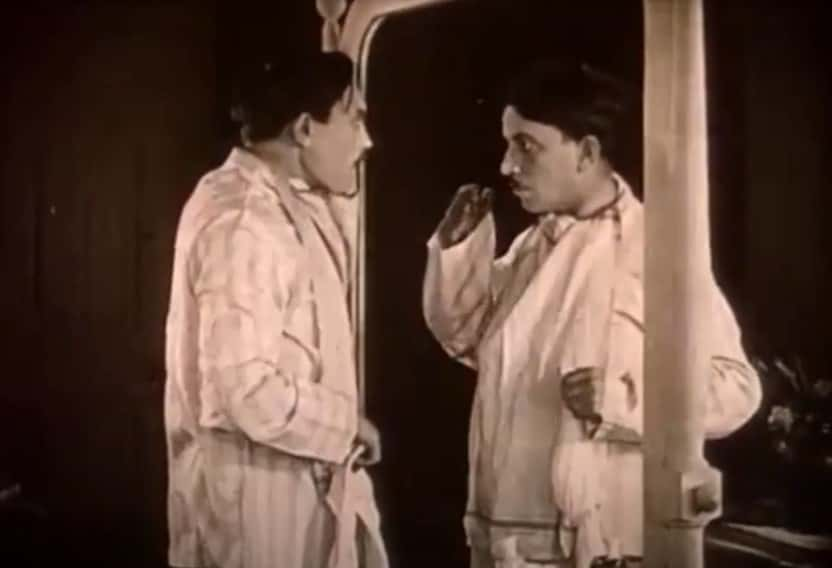 Seven Years Bad Luck (1921), Max Linder Productions
Seven Years Bad Luck (1921), Max Linder Productions
31. He Disappointed Audiences
While critics praised Linder for pushing Seven Years Bad Luck to the limits of comedic filmmaking at the time, general audience members weren’t quite as enthusiastic. Linder went on to release Be My Wife later that year, which also fell short of audience expectations. With these two failures weighing on his mind, Linder took one last, final stab at breaking into the American film scene, and the results were so devastating—it ruined everything.
32. He Stopped Being Funny
For his final attempt at an American film, Linder threw away the “Max” character entirely. Instead, he filmed The Three Must-Get-Theres in 1922, a satirical work loosely based on The Three Musketeers. The film failed at the box office, and led Linder to make this incredibly sad confession to director Robert Florey: “You see, Bob, I sense I’m no longer funny; I have so many preoccupations that I can no longer concentrate on my film character.”
From here on out, Linder’s story becomes a full-blown train wreck.
 The Three Must-Get-Theres(1922), Max Linder Productions
The Three Must-Get-Theres(1922), Max Linder Productions
33. He Changed Things Up
Linder returned to France in 1922, where his depression only hampered his motivation to work. Still, he managed to create a semi-serious film, ominously entitled Help! The film was more or less a horror picture, punctuated by moments of comedy and humor by Linder. This shift in style and tone resonated well with audiences in England, but likely did little to improve Linder’s mental state.
But even as his life spiraled out of control, he found himself bolstered by one sweet surprise.
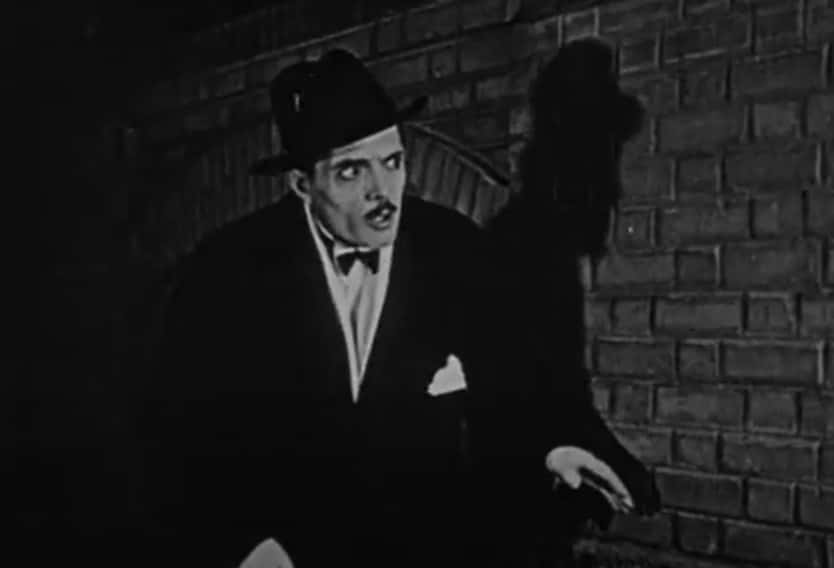 Help! (1924), Films Abel Gance
Help! (1924), Films Abel Gance
34. He Met “The One”
Sometime between 1922 and 1923, Max Linder met the love of his life at a hotel in Chamonix, France. The name of his love was Hélène Peters, and Linder was completely enchanted by her. The two spent all evening chatting in the hotel lounge, and by the end of the night, he knew that she was the one. Unfortunately, this sweet, innocent story of romance wasn’t quite so innocent underneath the surface.
35. He Had A Problematic Romance
One of the biggest problems that Linder faced when it came to his romance with Peters was the age gap. By this time, Linder was 39 years old, and Peters was only 17. Not only was Linder old enough to be Peters’s father, but Peters herself was underage. In spite of this, Linder wanted Peters, which led to Linder concocting a ridiculous, wild, and extremely dangerous plan.
36. He Tried To Escape
The two of them would run away, Linder decided. Where to? Monte Carlo, of course! In early April 1923, Linder and Peters hopped into a car, determined to carry out their plan. Linder pushed his car to its limits as he sped through France; he likely knew that the authorities would come after them as soon as they learned of their disappearance.
Unfortunately, their little road trip soon went awry.
37. He Nearly Lost His Life
While driving through Nice, Linder lost control of his car while going on a bend at high speed. The car crashed and ejected Linder from the vehicle. Linder suffered a head wound but survived through sheer, dumb luck. After (presumably) checking on Peters, the two stayed in Nice, unable to carry on to Monte Carlo. From there, Linder’s good fortune quickly ran out.
38. They Captured Him
In late April of 1923, the authorities descended upon Linder and Peters. Due to Peters’s young age, the authorities charged Linder for “kidnapping a minor.” Being charged with kidnapping didn’t manage to stop Linder from marrying Peters, however. As soon as Peters turned 18, the two wed on August 2, 1923, and moved into an apartment together.
And that's when Linder’s relationship with Peters became even more disturbing.
39. His Relationship Was A Mess
Not long after their marriage, dark rumors began to swirl around Linder. According to these rumors, Linder was “a fiercely jealous and mentally abusive husband.” In his paranoia, Linder often accused Peters of being unfaithful. He called Peters when he was away from home to make sure that she had not left without his consent, and even threatened to “end her.”
These rumors were already chilling enough, but somehow, they got even more frightening.
40. He Was Extremely Possessive
According to some reports, the head workman at Linder’s home overheard a conversation between Linder and a friend that made his blood run cold. Linder, according to the workman, told this friend that he could not bear to think about Peters being with another man after he was gone, so he planned to end the lives of both himself and his wife. Despite this clandestine confession, no one took action, and the consequences were unspeakable.
41. He Nearly Ended It All
On February 24, 1924, Linder and Peters were both found unconscious at a hotel in Vienna, Austria. They were successfully revived, but no one truly knows what Linder and Peters did in that hotel. Instead, the incident was quickly covered up by a physician, who claimed that the two accidentally overdosed on “sleeping powder.”
Linder himself wasn’t forthcoming with what happened that day either—publicly, he continued on as if nothing had happened. Clouds of suspicion hung in the air.
42. He Tried To Keep Going
On June 27, 1924, Max Linder welcomed a baby girl into the world. He named his daughter Maud-Lydié Marcelle Leuvielle, who is better known as Maud Linder. It seemed as though Linder and his wife were going to be okay—not only were they starting a family, but Linder even began working on a movie called The King of the Circus. This veneer of normality, however, quickly turned out to be a façade.
43. He Found A Dark Source Of Inspiration
In late October of 1925, Linder and Peters attended a screening of a film in Paris called Quo Vadis. In the film, two lovers “bleed themselves to death” due to the impossibility of their relationship. Viewing this film seemed to have a strange effect on Linder. Add this to Linder’s ill health, possessiveness over his wife, and heavy use of opium, and you had a recipe for disaster.
44. It All Came Crashing Down
Later that same month, Linder’s life came to an abrupt end. Linder and Peters secretly drank Veronal (a sleeping aid), injected themselves with morphine, and cut their wrists. Upon the discovery of their bodies, doctors rushed to their aid and fought to keep the two alive. Tragically, nothing worked; Peters passed first, while Linder followed soon after on the first of November.
The aftermath of their actions sent ripples throughout the filmmaking world.
45. His Comedy Inspired Others
The news of Linder’s demise devastated Charlie Chaplin, who closed his studio for one day out of respect for Linder. Linder’s films went on to shape much of Chaplin’s work, as well as the work of other comedians. Thanks to Linder, comedic films began to shift away from straight slapstick, and towards character-driven plots. Although much of Linder’s work has been forgotten, his influence on comedy still lives on.
46. He May Have Been Responsible
Although Linder and Peters’s passing was officially described as a double taking of life, no one really knows if this is true. Years later, The New York Times released an article and it opened a whole new can of worms, stating that “no one believes [Peters] herself opened her veins.” The same article reported that Peters told her mother in a letter that Linder may try to end her life.
As the years wore on, critics continued to speculate on the true nature of Linder and Peters’s passing.
47. She Kept His Story Alive
So, what happened to Max Linder’s daughter, Maud? Maud grew up with her grandparents and had little idea of her father’s importance until she was 20 years old, which was when she saw one of his films for the first time. This drove her to create two works that celebrated Linder’s films: Laugh with Max Linder in 1963, and The Man in the Silk Hat in 1983.
Thanks to her efforts, Linder’s story was not completely lost to history.
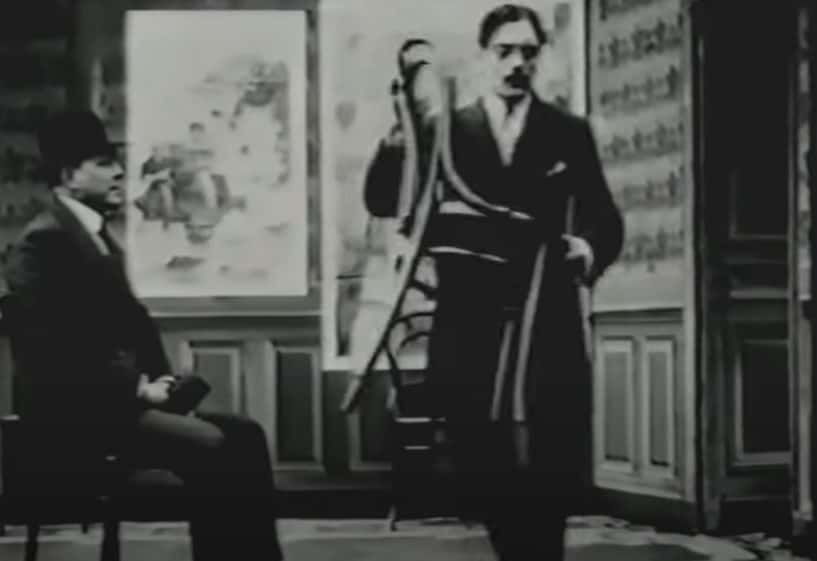 The Man in the Silk Hat (1983), Films Max Linder
The Man in the Silk Hat (1983), Films Max Linder
48. He Faded Away
Linder was an incredibly prolific filmmaker and actor but still remains mostly unknown to film buffs and enthusiasts alike. Between 1905 to 1925, Linder appeared in over 500 films (mostly short comedies). Out of these 500 films, only a little over 200 are identified. Out of the 200 identified films, only 82 still exist in some form.
Sadly, despite his numerous films and clear influence on the likes of Chaplin and Buster Keaton, Linder remains an obscure figure.
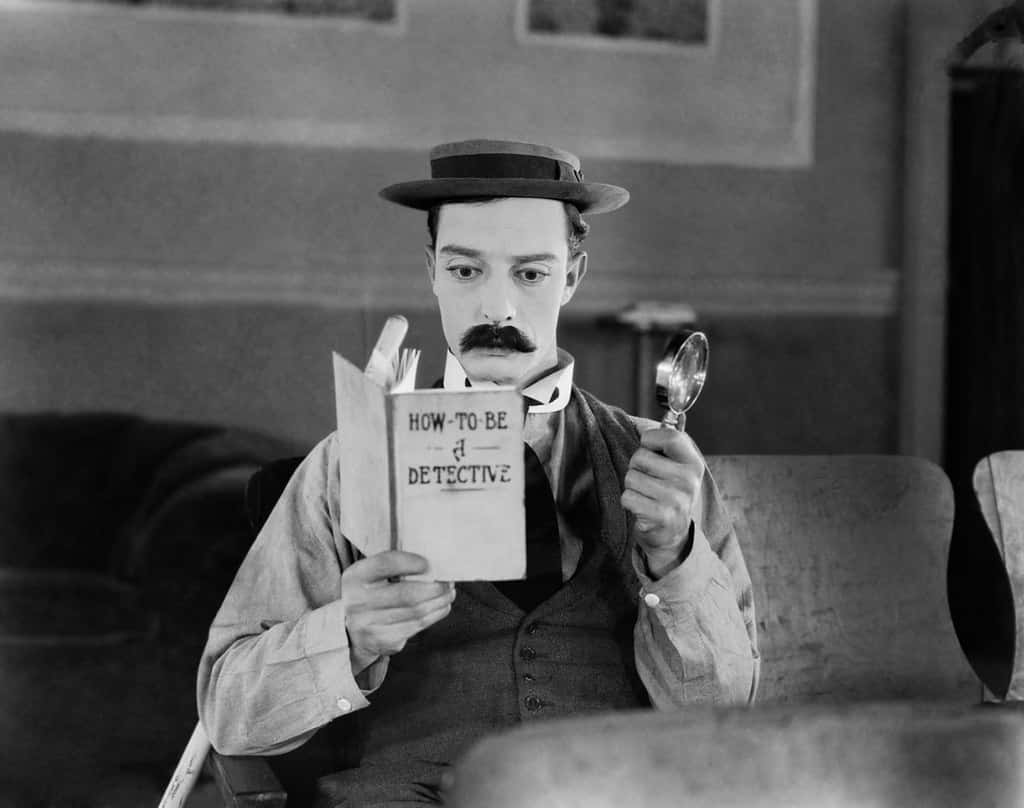 Flickr, Breve Storia del Cinema
Flickr, Breve Storia del Cinema
49. They Misreported His Passing
After Linder’s dismissal from service during WWI, one newspaper incorrectly reported that Linder had lost his life on the frontlines. Obviously, this wasn’t true, and reading his own obituary must’ve been a surreal moment for Linder. Linder had to ring up the publishers to let them know that he was, in fact, alive and kicking. This forced them to run the headline, “Max Linder Not Killed.”
50. He “Invented” Music In Film
Linder was a filmmaking pioneer in more ways than one. Early on in his career, Linder discovered the importance of adding the right music to his films. Of course, having music in your movies nowadays is a matter of course, but that wasn’t always the case in the era of silent film. If you have a particular soundtrack from a movie that you love, you can thank Max Linder for introducing the world to the importance of music in film.

